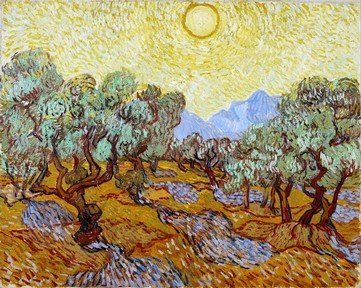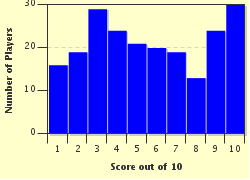Quiz Answer Key and Fun Facts
1. There are numerous examples of equestrian portraits in the world's galleries. On display at the Galleria degli Uffizi in Florence, this is "Equestrian Portrait of the Emperor Charles V" painted by which great Flemish Baroque artist?
2. This is the first of our paintings to features canines. This 1772 work actually depicts a dingo. This painting, along with one of a kangaroo by the same artist, is one of the first two depictions of Australian mammals in western art. Who is this artist who is renowned for his paintings of animals?
3. Time now for some feline art. The pictured drawing entitled "Autumn Cat in a Garden with Chrysanthemum" painted by Byeon Sang-byeok is an example of art from which country?
4. Another example of equestrian art, this time of the western genre. Entitled "The Bridle Path, White Mountains", which American landscape painter produced this 1868 work?
5. This fantastic depiction of a dog's devotion entitled "The Old Shepherd's Chief Mourner" was painted in 1837. It is the work of which English artist who is particularly noted for his wildlife paintings and sculptures?
6. Entitled "Tiger in a Tropical Storm (Surprised!)" the pictured piece is an 1891 work by an artist whose paintings include lions, antelope, buffalo, rhinoceros and numerous other animals. Which Post-Impressionist painted this?
7. Originally entitled "Judge St. Bernard Wins on a Bluff" but now known simply as "Waterloo", the pictured work is one of a 16-painting series of anthropomorphic dogs commissioned by the Brown & Bigelow advertising company to sell cigars. Who is the American artist?
8. On display at the Gemäldegalerie in Berlin, "Two Monkeys" is a 1562 painting by an artist who is best known for his landscapes and his highly-populated peasant scenes. Which Flemish Renaissance artist produced the pictured painting?
9. Horses and dogs both feature in the pictured hunting scene, an 1856 painting entitled "L'Hallali au Cerf" (The Kill of Deer). It is the work of which French artist, a member of the 19th-Century Realist Movement?
10. We conclude with another equestrian painting, and another artist who is perhaps better known for his depiction of a different subject, although he did also produce numerous works featuring horse-racing. Which Impressionist painted the pictured work?
Source: Author
EnglishJedi
This quiz was reviewed by FunTrivia editor
looney_tunes before going online.
Any errors found in FunTrivia content are routinely corrected through our feedback system.

